This is the second post to our blog series, Be Sea Otter Savvy, written by Gena Bentall, sea otter biologist and Program Coordinator for Sea Otter Savvy. Future posts in this series will include tips on how to help sea otters thrive and information about sea otters’ behavior, biology, and their role in the estuary and ocean ecosystems.
When humans and sea otters overlap
Disturbance to the natural behavioral patterns of sea otters can occur anywhere that human marine recreation activities and sea otter habitat overlap. Locations like harbors and bays, with easy access to the ocean and calm, protected conditions, are especially alluring to both recreationists and marine wildlife. Sea otters are very charismatic and viewing and/or photographing them is often a primary goal of marine recreationists. Kayakers, stand-up paddlers, scuba divers, ecotour operators, and others are often unaware that the manner in which they behave near otters can disturb important behavioral patterns and result in wasted energy, increased stress, and potentially pup abandonment.
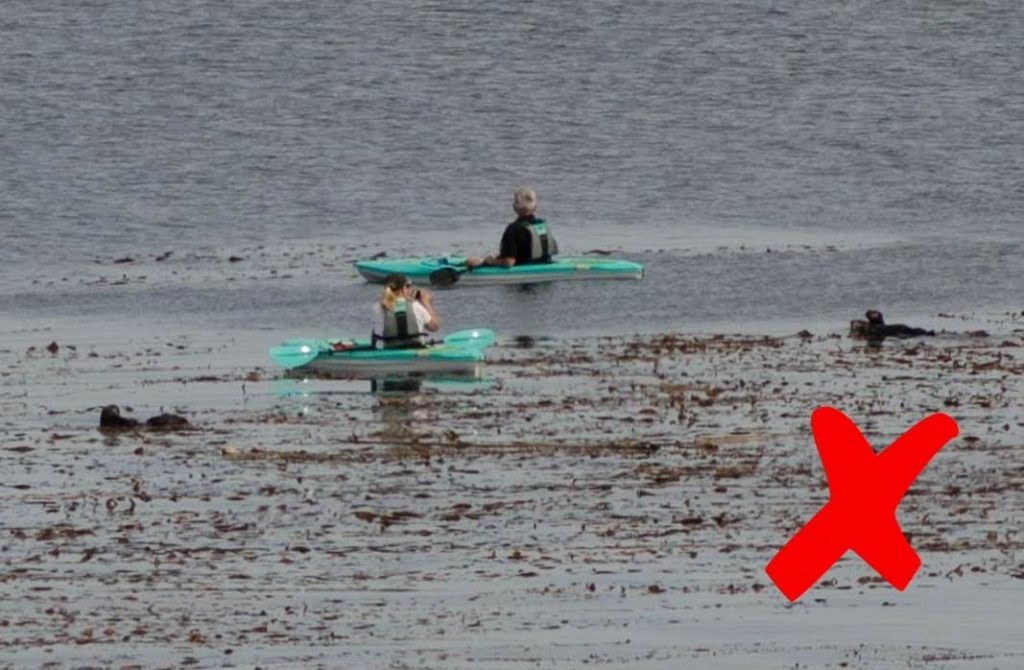
Because sea otters don’t store energy in the form of fat, they are dependent on a delicate balance of energy income in the form of prey and energy expense from activities such as swimming back and forth to foraging areas, social interaction, fur maintenance, and caring for their pups. Like some of us, they live “paycheck to paycheck,” struggling to balance that energy income versus expense equation every day. Swimming and diving to avoid watercraft that approach too closely or too aggressively results in an additional energy expense burden. If this results in an energy deficit, the sea otter must either find more prey to eat or risk losing body condition, which is elemental to good health, disease resistance, reproductive success, and survival.
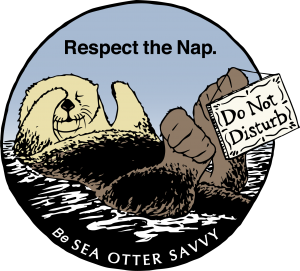
Perhaps most importantly, at sites designated as “Disturbance Hot Spots”—Moss Landing, Monterey, and yes, Morro Bay ─ a high density of recreationists means a higher disturbance frequency. A sea otter off the Big Sur coast that dives to avoid people once per month is not going to suffer the same cumulative effects as otters at these high-traffic sites where our data show sea otters may be disturbed an average of six times each day and as many as twenty times!
The sea otters of Morro Bay have become quite habituated to human presence in a relatively short amount of time. If an otter does not swim away when a kayak comes within fifteen, ten, or five yards of it, is coming this close still wrong? We have yet to dig into this question from a scientific perspective, but it is probable that habituation’s apparent reprieve from disturbance comes at a price—cross-exposure to zoonotic diseases or increasing aggressive encounters are some examples. In an ever more crowded world, we need to do what we can to preserve the wildness of these animals for their sake and ours. I will discuss the special case of Morro Bay’s tolerant sea otters in depth in a future blog.
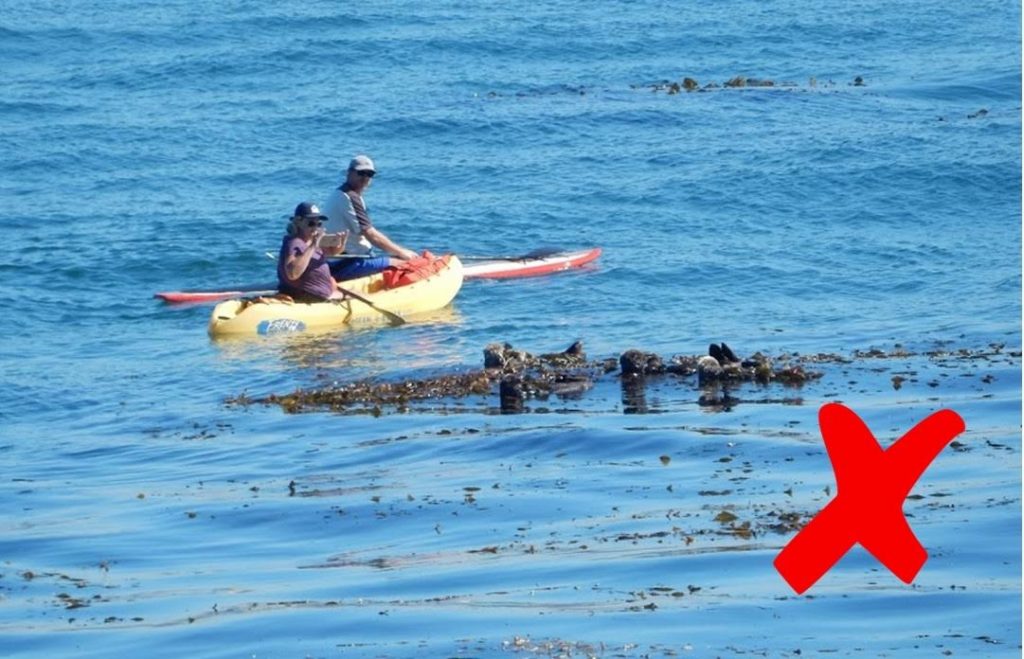
Why do we need guidelines?
Guidelines help people make recommended choices. At the foundation of Sea Otter Savvy’s guidelines are two basic objectives:
1. Increase compliance with the laws protecting sea otters from harassment
2. Reduce chronic, potentially harmful, disturbance.
Our program is founded on the basic assumption that most people do not wish to inflict harm on sea otters. These guidelines, especially when accompanied by information about why sea otters are vulnerable to the effects of human disturbance, encourage people to choose behavior that promotes stewardship over disturbance.
How are guidelines developed?
The process of deciding what guidelines are necessary, practical, and effective is a rocky road. Setting minimum distance recommendations for sea otters is especially challenging as sea otters in different locations have different thresholds for disturbance. (Think back to the sea otter in Big Sur versus the sea otter in Morro Bay, for example.) Other factors—location features, human psychology—play an important role in determining effectiveness. For example, kayaks and stand-up paddleboards launching from one of Morro Bay’s most popular access points, Coleman Beach, may be within fifty yards of resting sea otters as soon as they hit the water. Even if they have the best of intentions to avoid sea otters, establishing a distance guideline of fifty yards would set paddlers up for failure.
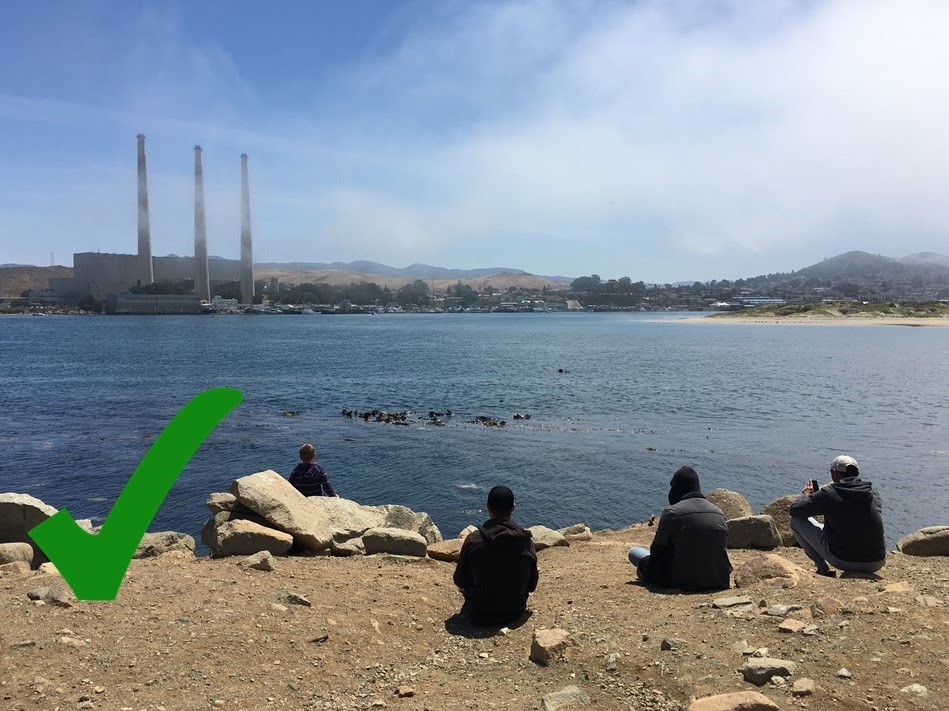
Creating a guideline that is impractical given the specifics of a location, may create a lack of trust and compliance in paddlers that renders the guideline ineffective. The context of each encounter also needs to be taken into account. Foraging sea otters may pop up next to a kayak well within even the narrowest distance guideline. As long as the paddler does not pursue the forager, or move between a mother sea otter and her pup, they are still complying with the spirit of the guidelines, which is to avoid disrupting natural behavior Input from the community, stakeholders, and experts, together with the most recent science, are at the foundation of Sea Otter Savvy’s guidelines. We will continue to evolve them to be as effective as possible at reducing human disturbance to sea otters. Despite the complex process behind their development, our guidelines are simple rules of behavior that anyone can follow. These guidelines will not only help people “respect the nap,” they will also enhance everyone’s wildlife experience by protecting the vital natural behaviors of our neighborhood sea otters.
Sea Otter Savvy Guidelines
- Maintain a respectful distance from all wildlife. Specific distance recommendations are hard to make, since wildlife react differently in different places and situations. However, we recommend staying at least five lengths of your kayak (around twenty yards.) away from all marine wildlife. When in doubt, give them extra space!
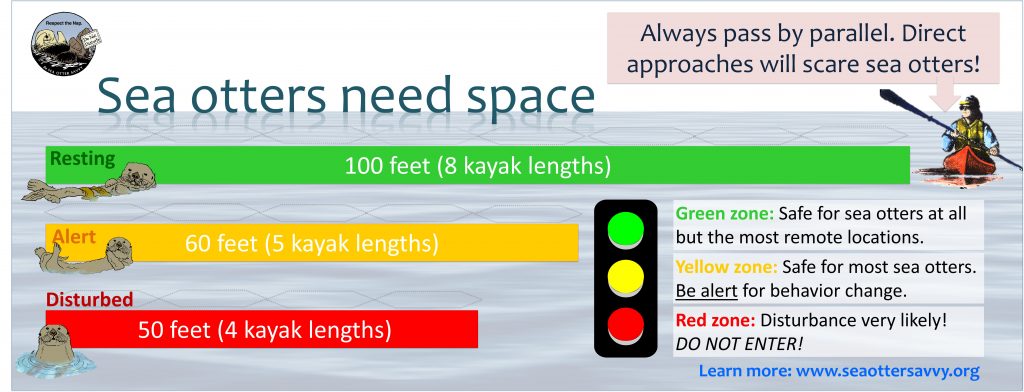
- Avoid approaching sea otters directly. Maneuvering your craft directly at an otter or raft of otters can be perceived as much more threatening than passing by parallel or obliquely, while keeping a steady pace.
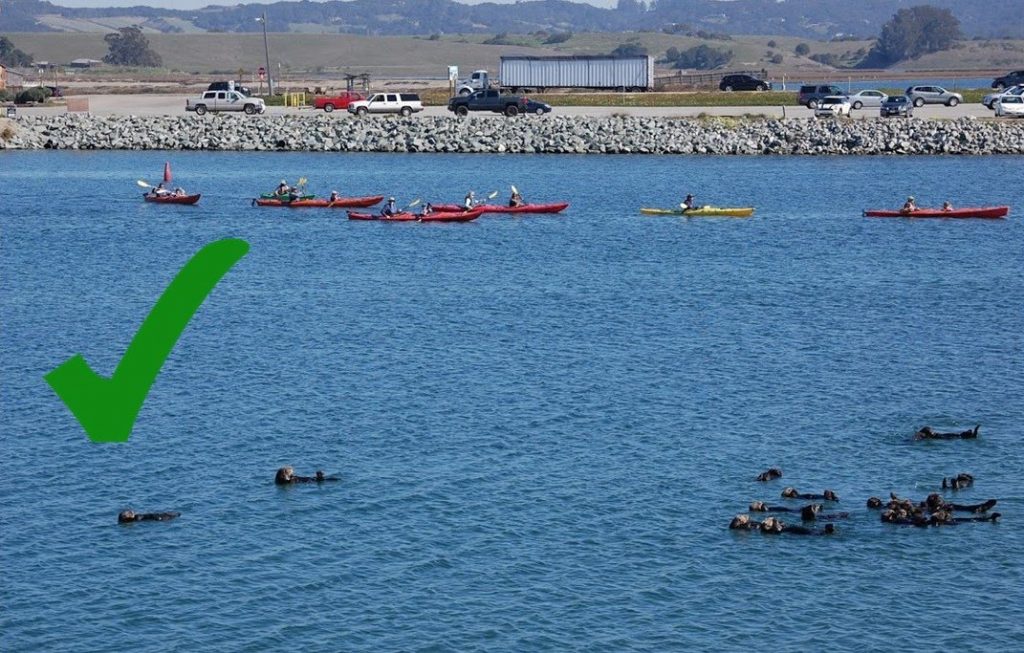
These kayakers are observing the sea otters from a respectful distance. They are also paddling parallel to the sea otter raft, rather than straight toward it. They are attentive to their surroundings, and avoiding distraction by keeping phones stashed away. - Do not encircle sea otters with watercraft—they will feel trapped. If someone else is already watching the sea otters, wait your turn before approaching and stopping at a respectful distance away.
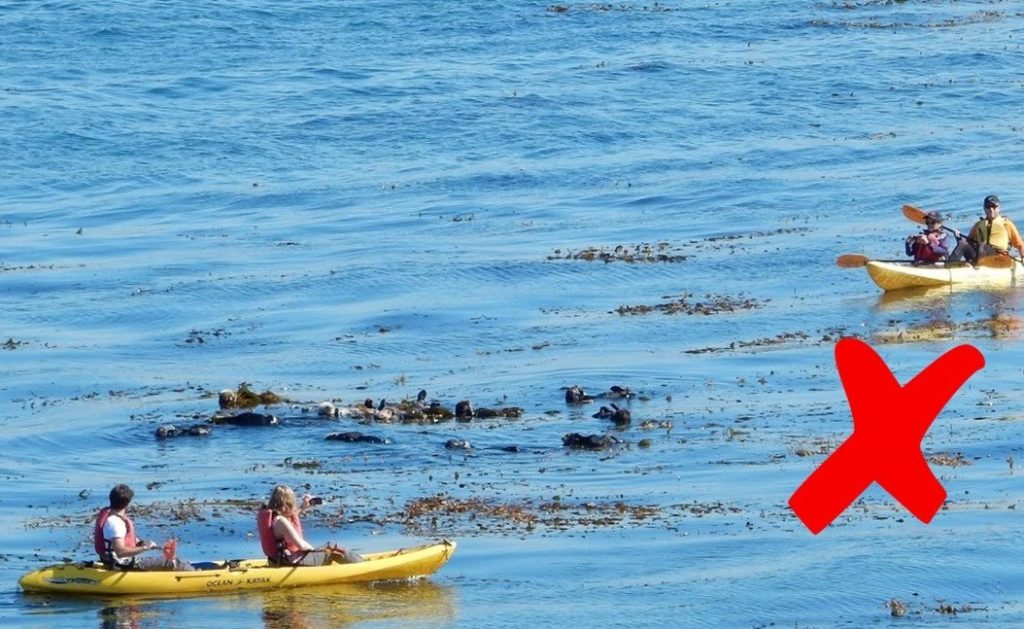
In the photograph above, the kayakers are trying to get a good photograph using their smart phones and are too close for comfort to the sea otters. The two kayaks are also encircling the sea otter raft, which can make the otters feel trapped and threatened. - Sea otters are much more likely to be disturbed by noisy paddlers, loud music on boats, and even noisy observers on shore, than quiet wildlife watchers.
- Most importantly, pay attention! Keep a watchful eye on the sea otters for changes in behavior. If they raise their heads and look at you, they are warning you that you are getting too close. Their next step might be to dive and swim away.
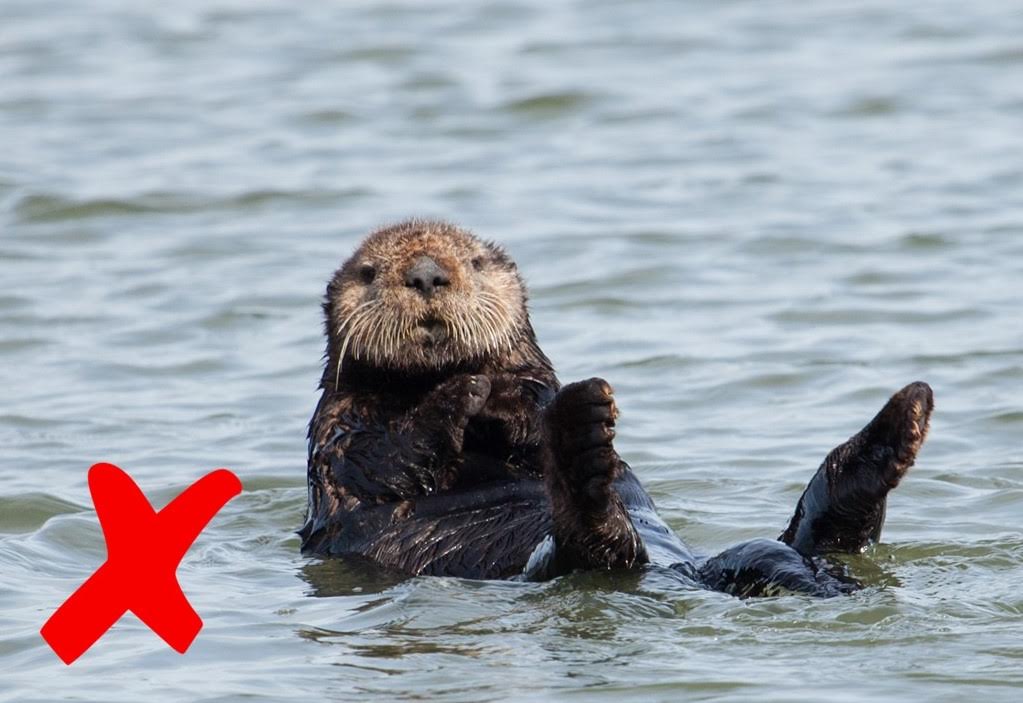
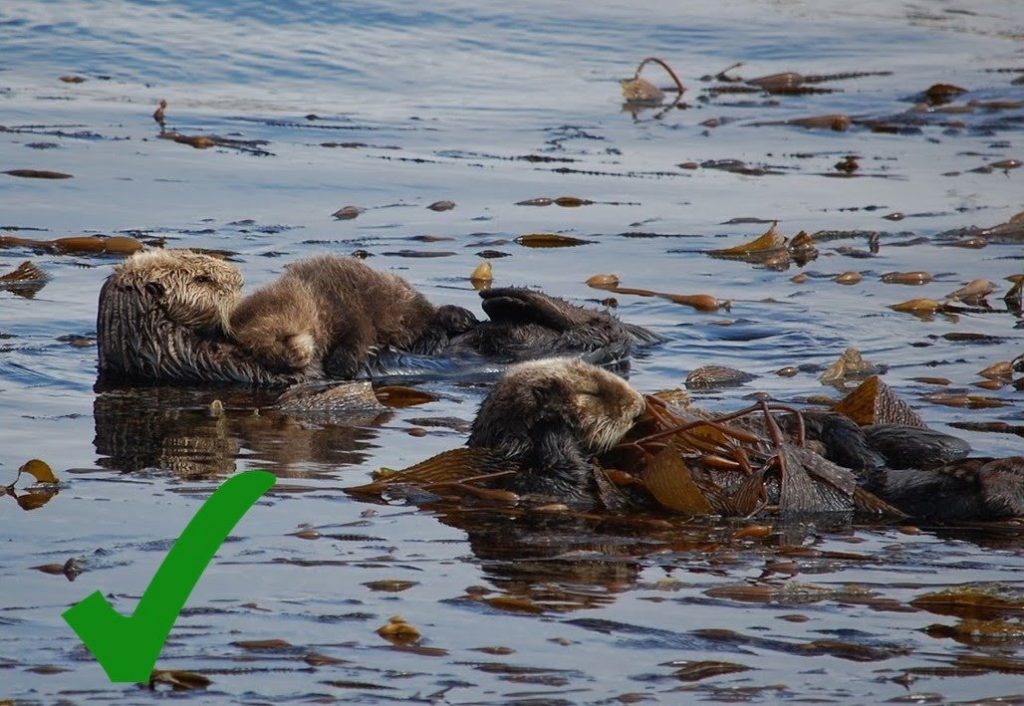
Every business operator in Morro Bay that caters to people visiting the waters of the bay has an obligation to promote stewardship by sharing guidelines for protecting wildlife. All of us can help! Paddlers in Morro Bay are visible to locals and visitors alike. Many will watch and look to others to show them how to behave around wildlife—you are their role model! Encourage people to think about the needs and well-being of sea otters when they are viewing them. Try leaving your smart phone behind when you paddle. This will inspire you to enjoy your experience mindfully and avoid the temptation to get that selfie with wildlife! Armed with a little information, we can share the coastal environment respectfully and peacefully with sea otters!
Understanding the needs of sea otters is most important to help prevent disturbing them, but it’s also important to remember that sea otters are protected from harassment by two federal laws, state law and a number of local laws and regulations. Harassing and disturbing sea otters and other marine mammals, even when unintentional, violates the law.
Check out (and share) these videos about our Sea Otter Savvy guidelines
Note: The guidelines discussed here pertain primarily to people using small craft (kayaks, SUP, electric boats). For those using larger, motor-powered craft in sea otter habitat find more information on our website.
About Gena Bentall, Guest Author
Since 2001, Gena has worked as a sea otter biologist, studying sea otters in such wide ranging locations as the Aleutian Islands, Russia’s Commander Islands, San Nicolas Island off the coast of Southern California, and along the Central California coast. She studied zoology and marine biology at Oregon State University in Corvallis, and obtained her master’s degree in Ecology and Evolutionary Biology at the University of California Santa Cruz under Dr. James Estes. After years of studying sea otters in the wild, Gena has learned much about their unique biology and behavior, and witnessed first-hand the chronic nature of disturbance to sea otters by human recreation activities. Gena now coordinates the Sea Otter Savvy program and reaches out to the central coast communities of Monterey, San Luis Obispo, and Santa Cruz counties.
Subscribe to our weekly blog to have posts like this delivered to your inbox each week.
Help us protect and restore the Morro Bay estuary!
- Donate to the Estuary Program today and support our work in the field, the lab, and beyond.
The Estuary Program is a 501(c)3 nonprofit. We depend on funding from grants and generous donors to continue our work. - Support us by purchasing estuary-themed gear from ESTERO. This locally owned and operated company donates 20% of proceeds from its Estuary clothing line and 100% of Estuary decal proceeds to the Estuary Program. Thank you, ESTERO!
- Purchase items from the the Estuary Program’s store on Zazzle. Zazzle prints and ships your items, and the Estuary Program receives 10% of the proceeds. Choose from mugs, hats, t-shirts, and even fanny packs (they’re back!) with our fun Estuary Octopus design, our classic Estuary Program logo, or our Mutts for the Bay logo.
